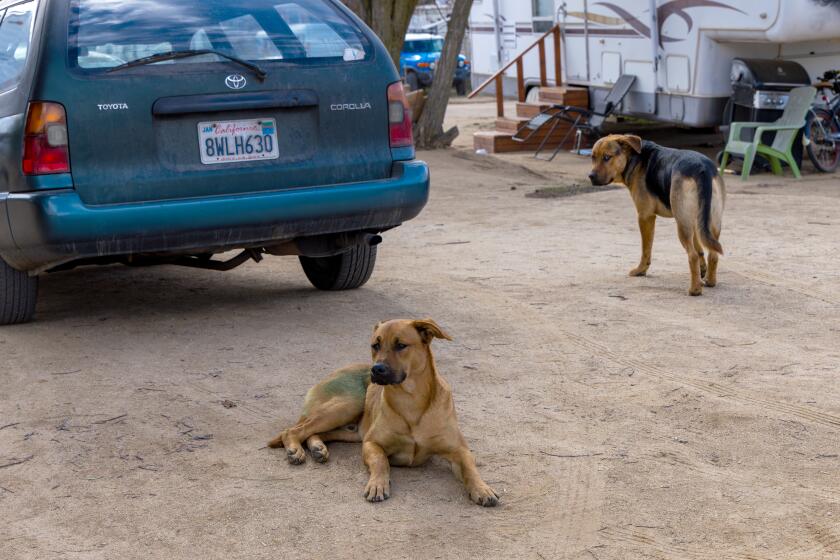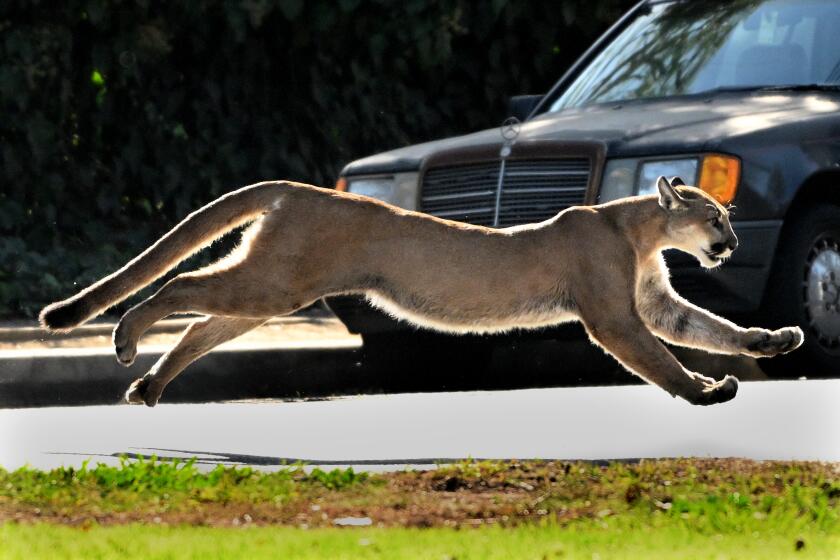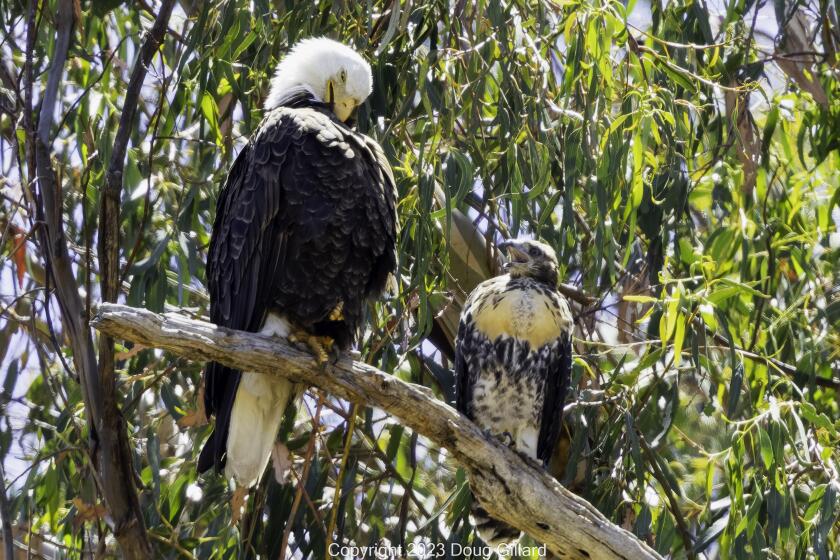
- Share via
An “apocalyptic” mass mortality event that has left thousands of sea lions and elephant seals dead on the beaches of South America is raising alarms among some California sea mammal experts who fear similar scenes could play out along California’s Pacific Coast and other continents as the H5N1 bird flu continues its march across the globe.
The highly pathogenic avian influenza virus has become notorious for its devastating affects on wild and domestic bird populations over the last four years, but only recently has it inflicted so many deaths in a mammal population.
Up until now, the ability of the virus to jump from mammal to mammal has been limited, but the scale of infections and deaths in South America has raised troubling questions about whether something has changed.
It’s a rarely discussed problem, but dogs are the No. 2 predator of livestock in the U.S. In California, roaming dog packs have even killed a human.
While it remains unclear whether this particular strain of H5N1 has improved its ability to pass easily between mammals, such a development would have potentially devastating consquences for endangered and non-endangered species alike.
The disease “presents an existential threat to the world’s biodiversity,” wrote Chris Walzer, executive director of health for the Wildlife Conservation Society in a January statement, noting that the scene of dead elephant seals could “only be described as apocalyptic.”
According to the Centers for Disease Control and Prevention, the H5N1 viruses circulating in birds “are believed to pose a low risk to the general public in the United States; however, people who have job-related or recreational exposures to infected birds may be at higher risk of infection and should take appropriate precautions outlined in CDC guidance.”
The World Health Organization has also deemed the risk of human-to-human transmission to be low, and notes that candidate vaccines have been developed for pandemic preparedness.
Yet the speed with which the virus has destroyed once-thriving animal populations is breathtaking, said Marcela Uhart, a wildlife veterinarian with UC Davis’ One Health institute, who is based in Argentina.
In October, the mortality rate for newborn elephant seal pups reached 96% on one beach in Argentina — astronomically higher than the 0.8% mortality rate observed there in 2022.
“Ten days and it’s done. There’s nothing left alive,” Uhart said.
Die-offs have also been observed in South American dolphins and fur seals. And the virus is practically knocking on Antarctica’s front door, where more than 100 million birds, including colony-living penguins, and marine mammals congregate.
“There’s climate change and habitat destruction,” which are taking their toll on the planet’s wildlife species, said Rebecca Duerr, an avian veterinarian with International Bird Rescue in Long Beach. “And then this. It’s grim.”
In California, some experts say they worry about the vulnerability of sea lions and sea otters.
“California has been spared some of the huge die-off events being seen somewhere else in the world. But we still have species that are very vulnerable to it. We’re not out of the woods by any stretch of the imagination,” Duerr said.
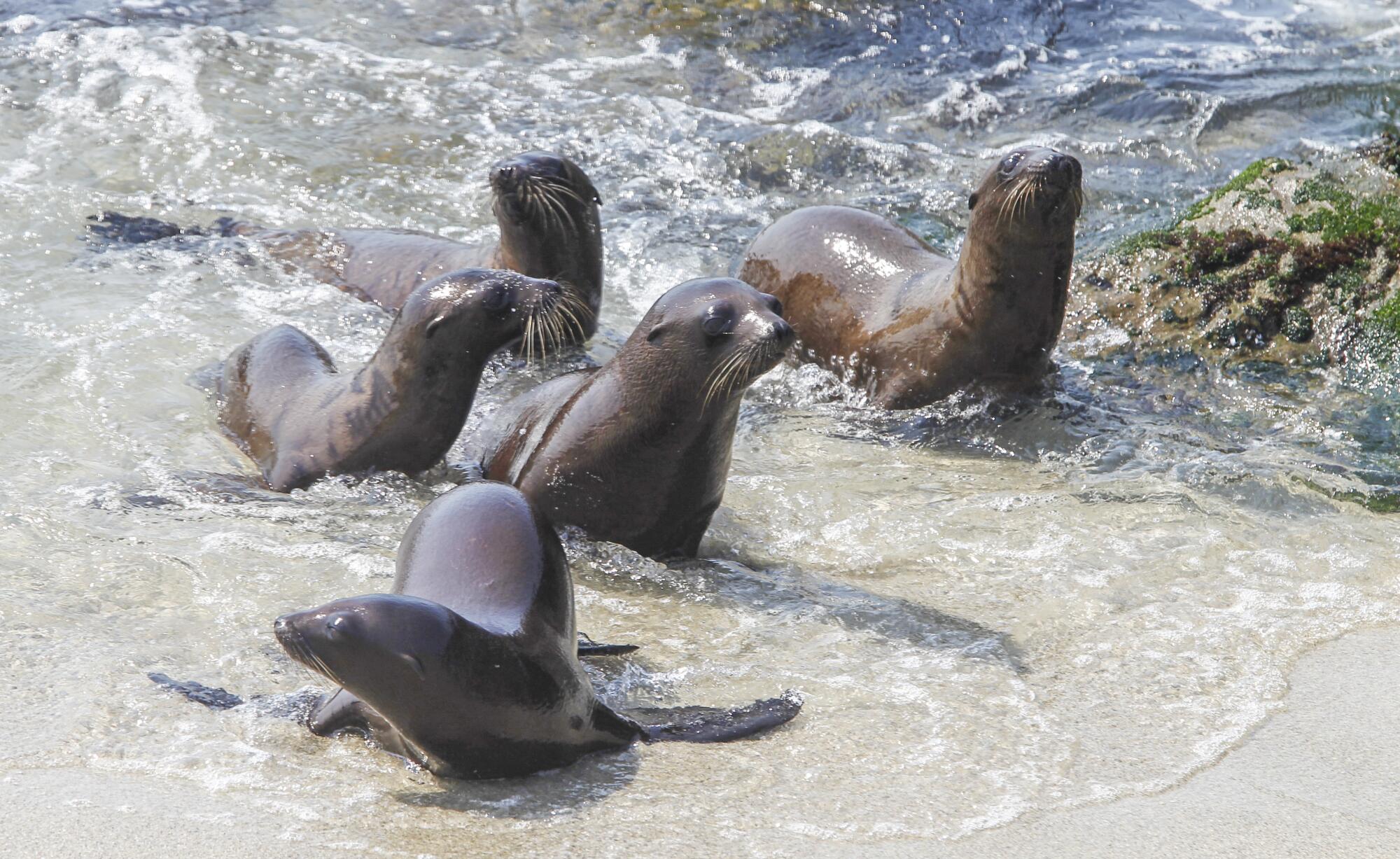
Colony nesting of seabirds and breeding of marine mammals occurs all along the California Coast, the Channel Islands and Farallon Islands. They are seasonally populated by such species as terns, sea lions and sea otters, among others.
“There’s a whole lot of concern still for what will happen in the bigger picture over time,” she said. “This summer is breeding season, the time that other areas of the world have seen huge die-offs at breeding colonies.”
The effects wouldn’t be limited to just the infected animals either, Duerr said. These animals are critical within wider ecosystems. Guano produced from breeding bird colonies provides nutrients for marine invertebrates and fish, for instance.
And if sea otters were to suffer such losses, that would endanger the health of California’s vast kelp forests, which would be left prey to sea urchins, said Christine Johnson, professor of epidemiology and ecosystem health at UC Davis.
And although Southern and Northern hemisphere populations of marine mammals don’t have much, if any contact, Johnson said the world is changing so quickly, we can’t really be sure about anything.
“The distribution of marine species is largely dictated on where their food goes, which itself is dictated by ocean trends and warming,” Johnson said. “Are there species that are now overlapping that hadn’t been before, based on climate or other factors?”
She said forces such as climate change and habitat destruction could have played a role in the virus’ geographical expansion, as well as its initial and sustained grasp on wildlife.
“There’s increasing evidence that pandemics that come from wildlife, in particular, are increasing in frequency,” Johnson said. “There’s not a lot of segregation or separation between wild animals and their pathogens” and domestic animals and people.
Scientists have completed the first comprehensive estimate of mountain lions in California, a vital statistic needed to shape puma-friendly land-use decisions and ensure that the predators can find room to roam, mate and find prey.
Until recently, highly pathogenic avian influenza, or HPAI, was considered strictly a poultry disease. It would flare up here and there — primarily in Asia — and get stomped out quickly by killing all the birds on an infected farm.
But in 2002, the virus jumped to wild birds, and in 2005, it had spread to Eastern Europe, where seven people were infected after de-feathering wild swans. Four of the people died. Nine years later, the disease reached North America — presumably via Alaska, where birds from around the world migrate and feast during the summer. And although it died down for a bit in Canada and the U.S. — flaring up occasionally in Asia, Europe and Africa — it came back with a vengeance in 2021.
Since that time, not only have hundreds of millions of domestic birds been culled, but countless numbers of wild birds and animals have contracted the virus.
Julianna Lenoch, the national coordinator of wildlife services for the U.S. Department of Agriculture’s Animal and Plant Health Inspection Service, said that while scientists are waiting for genetic information from South America, there is no “evidence that is of high concern yet in the United States, but I think watching mammal spillover and potential mammalian spread is something the global community is looking for.”
The agency routinely samples wild birds, and only samples mammals in which there is suspicion.
“We pick them up from state agencies or wildlife rehabilitation facilities or from someone who has an indication of suspicion ... so, what we have is probably an undercount,” she said.
But so far, the situation in North America is different from the “craziness” being seen in South America.
In the United States and Canada, the only mammals that have gotten the disease — such as foxes, skunks, coyotes and bears — are those known to scavenge on dead birds. There is no indication there is any mammal-to-mammal passage.
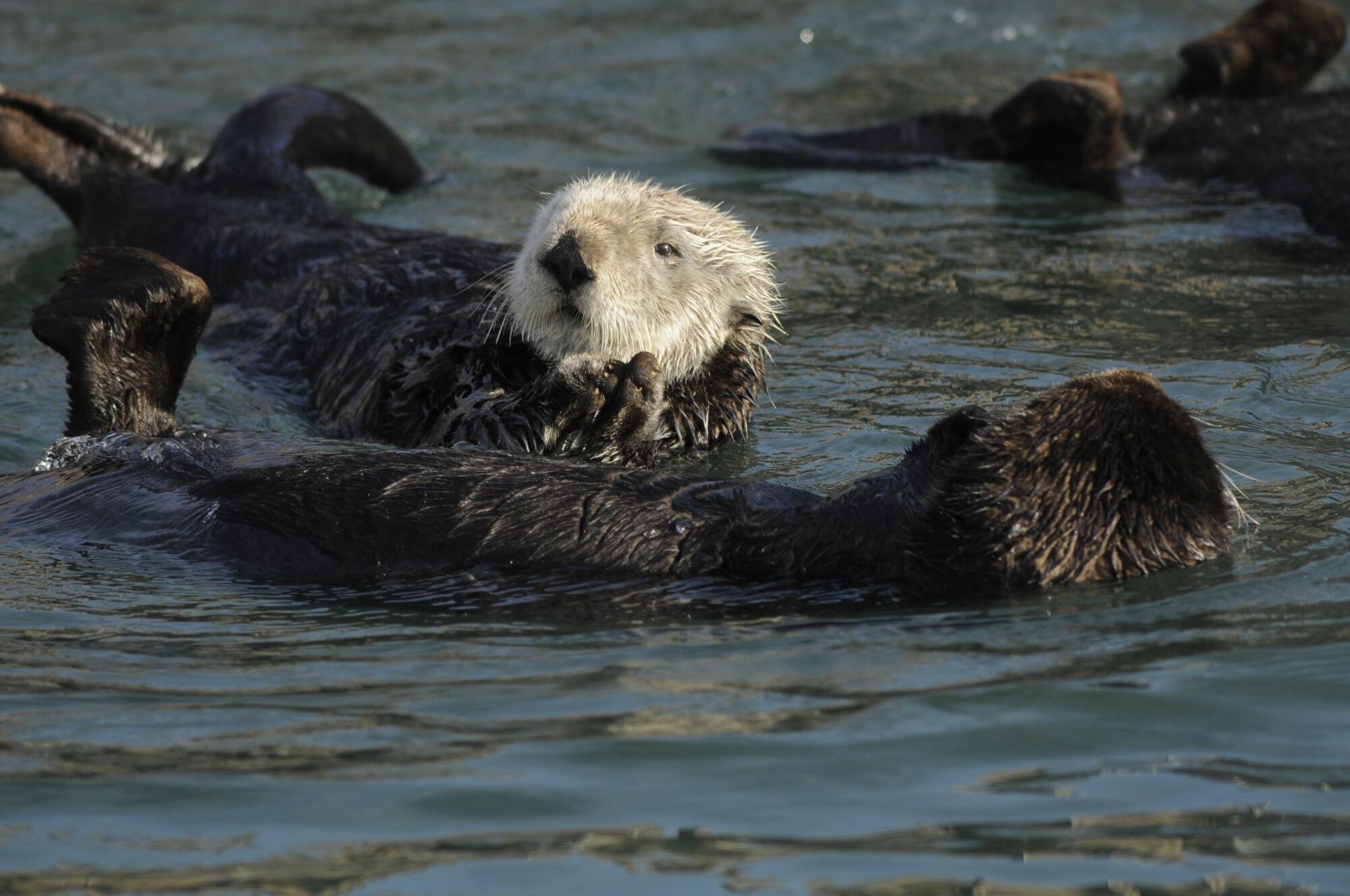
But North American animals may also share a defense that South American wildlife does not.
Because the virus has had a presence in North America since 2014, most of the continent’s wildlife has “some sort of base immunity to influenza,” said Deborah Fauquier, a veterinary medical officer with the National Oceanic and Atmospheric Administration. “They have some antibodies. Maybe not the perfect ones ... but they’ve seen the virus before.”
“In South America ... those populations were basically naive, and had not seen high path (influenza) before. ... So they just don’t have that type of immunity that we have in our seals as well as our birds,” she said.
So, whether the massive marine mammal die-offs are the result of a novel exposure to the disease, or because the virus has acquired the ability to move between mammals, remains unclear.
The story of Tuffy, a baby red-tailed hawk who was kidnapped by a family of bald eagles, has come to a sad end following a failed rescue attempt.
In either case, however, it does not bode well for wildlife in the last remaining areas of the world where the disease has not been detected: Antarctica and Oceania — the region that includes Australia, New Zealand and the surrounding islands.
Uhart said she was setting out in late February to sample animals in Antarctica — hitching a ride on a cruise ship. Before tourists are allowed off the boat for a landing, she said, she’ll go out and do surveillance and make sure everything looks normal; she’ll also collect samples.
“We’ve seen it enough,” she said. “I know really well what it looks like.”
Johnson said the nations of the world need to be on heightened surveillance as the virus continues its scourge.
Just as in the case of the coronavirus that caused COVID-19, this flu strain is constantly evolving and changing — with new variants appearing all the time. Yet, fatigue is setting in among many governments across the world that have been battling the virus for three or four years now.
“Nobody wants to think about or talk about another pandemic,” she said. But keeping a handle on its whereabouts and changes is critical for conservation, the ecosystem and human health.
“I think countries need to start preparing for the response efforts that’s needed for ... big biosafety concerns,” she said. “It does have a high mortality rate in people and we’re talking about a lot of virus on the landscape.”
